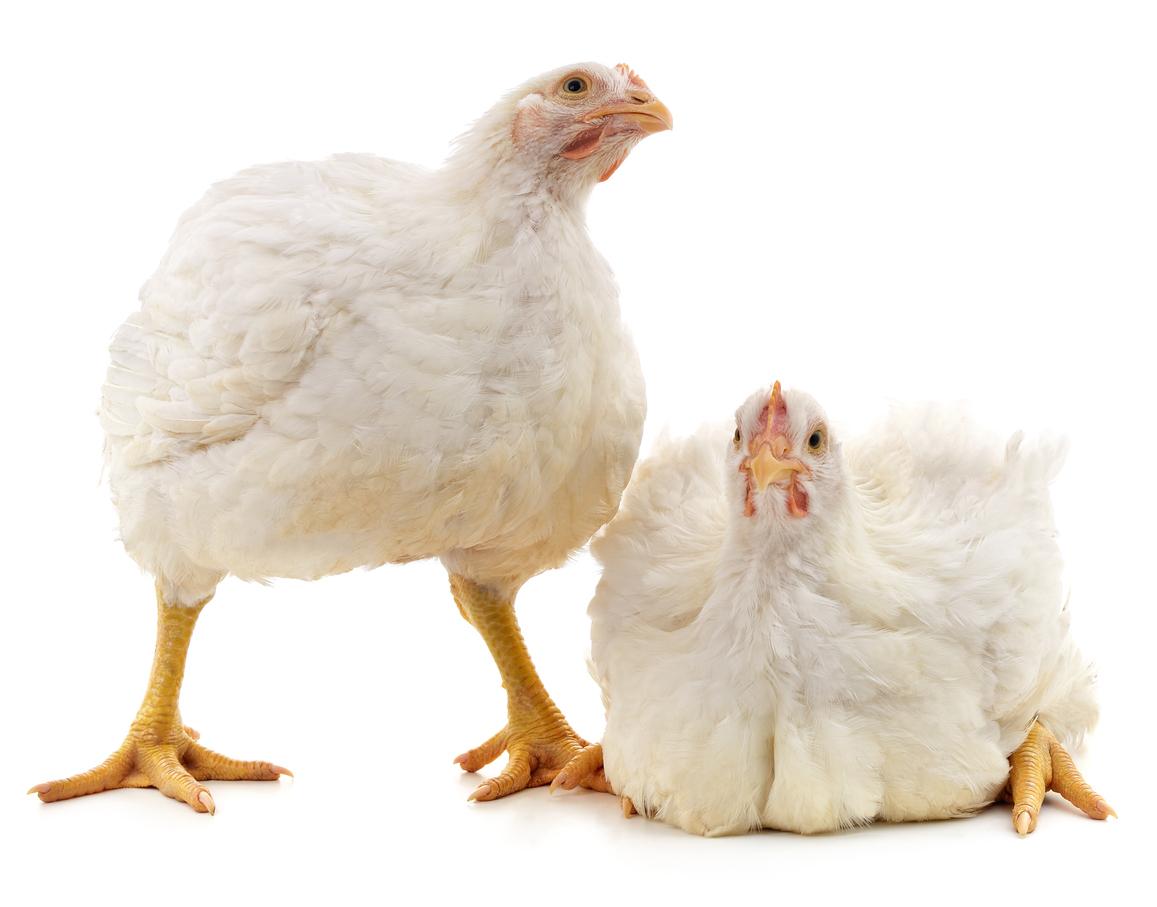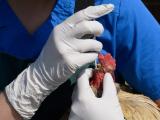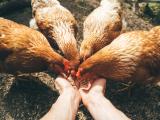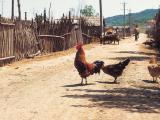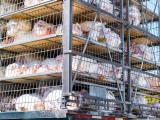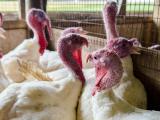As many countries brace for more highly pathogenic avian flu outbreaks with seasonal bird migration and weather changes, scientists from the United Kingdom today reported that breeding chickens that can resist the viruses—with an assist from CRISPR gene editing technology—holds promise as a tool for fighting the disease.
Detailing their findings in Nature Communications, the team bred chickens using gene-editing techniques to alter the ANP32A protein in chicken cells that avian flu viruses use for replication. The scientists hail from the University of Edinburgh, Imperial College London, and the Pirbright Institute.
Promising findings, but a single gene change might not be enough
When they exposed gene-edited chickens to a normal dose of H9N2 avian flu, 9 of 10 birds remained healthy, with no spread to other chickens. Then they exposed the gene-edited birds to an artificially high dose of the virus, finding that 5 of 10 became infected, which they said is a much lower rate than in non-modified chickens exposed to the same dose. Gene editing also helped limit the spread to 1 of 4 non-gene-edited chickens in the same incubator, with no transmission to gene-edited birds.
The team said the single gene edit of the ANP32A protein isn’t robust enough to apply to poultry production, and they are examining the possibility—using lab-grown chicken cells—of editing two more proteins, which they said would also prevent the emergence of escape viruses.
Mike McGrew, PhD, the study’s principal investigator who is with the University of Edinburg’s Roslin Institute, said in a press release from the school that bird flu remains a threat, but vaccination poses a number of challenges, including cost.
“Gene-editing offers a promising route towards permanent disease resistance, which could be passed down through generations, protecting poultry and reducing the risks to humans and wild birds. Our work shows that stopping the spread of avian influenza in chickens will need several simultaneous genetic changes,” he said.
Wendy Barclay, PhD, a study coauthor who is with Imperial College London, said the work is an exciting collaboration that fuses virology expertise with the Roslin Institute’s world leading genetic capability.
“Although we haven’t yet got the perfect combination of gene edits to take this approach into the field, the results have told us a lot about how influenza virus functions inside the infected cell and how to slow its replication,” she said.
Vaccination benefits and drawbacks, and new guidance from Europe
Vaccinating poultry is a strategy used in some parts of Asia, including China, and has been launched for the first time in Europe, with France recently introducing vaccination in meat ducks. A downside of vaccination is that vaccinated birds can sometimes still harbor the virus without showing symptoms, which can mask the spread of the disease.
Concerns about vaccination can trigger import restrictions, and in late September, the US Department of Agriculture (USDA) announced the restriction of poultry from France and its trading partners, due to the risk of importing highly pathogenic avian flu into the United States.
In a related development, the European Food Safety Authority (EFSA) today weighed in on vaccination against avian flu in poultry, outlining available vaccines and providing insights on vaccination strategies.
The ESFA said only one avian flu vaccine for poultry has been approved in the European Union, and comparing other vaccines is not possible. It also added that few vaccines have been tested in poultry other than chickens.
Preventive vaccination is the best strategy to cut the number of outbreaks and their duration and could be a useful tool in high-risk areas, the EFSA said. In outbreak settings, it recommends vaccination in a 3-km radius around the outbreak epicenter when located in high-risk areas.
The group emphasized that vaccination should be used alongside other prevention and control measures, such as monitoring, early detection, and biosecurity.
Outbreaks strike more US turkey farms
Following an expected drop in avian flu outbreaks over the summer in poultry, the USDA's Animal and Plant Health Inspection Service (APHIS) has reported a recent small uptick in poultry farm events, including at a commercial turkey farm in Jerauld County, South Dakota.
Today APHIS reported two more outbreaks on turkey farms, both in Utah’s Sanpete County. One farm houses 134,200 turkeys, and the other facility has 7,600 birds.
Record outbreaks in US poultry, which began in February 2022, have led to a record loss of 58.9 million birds from 47 states.
